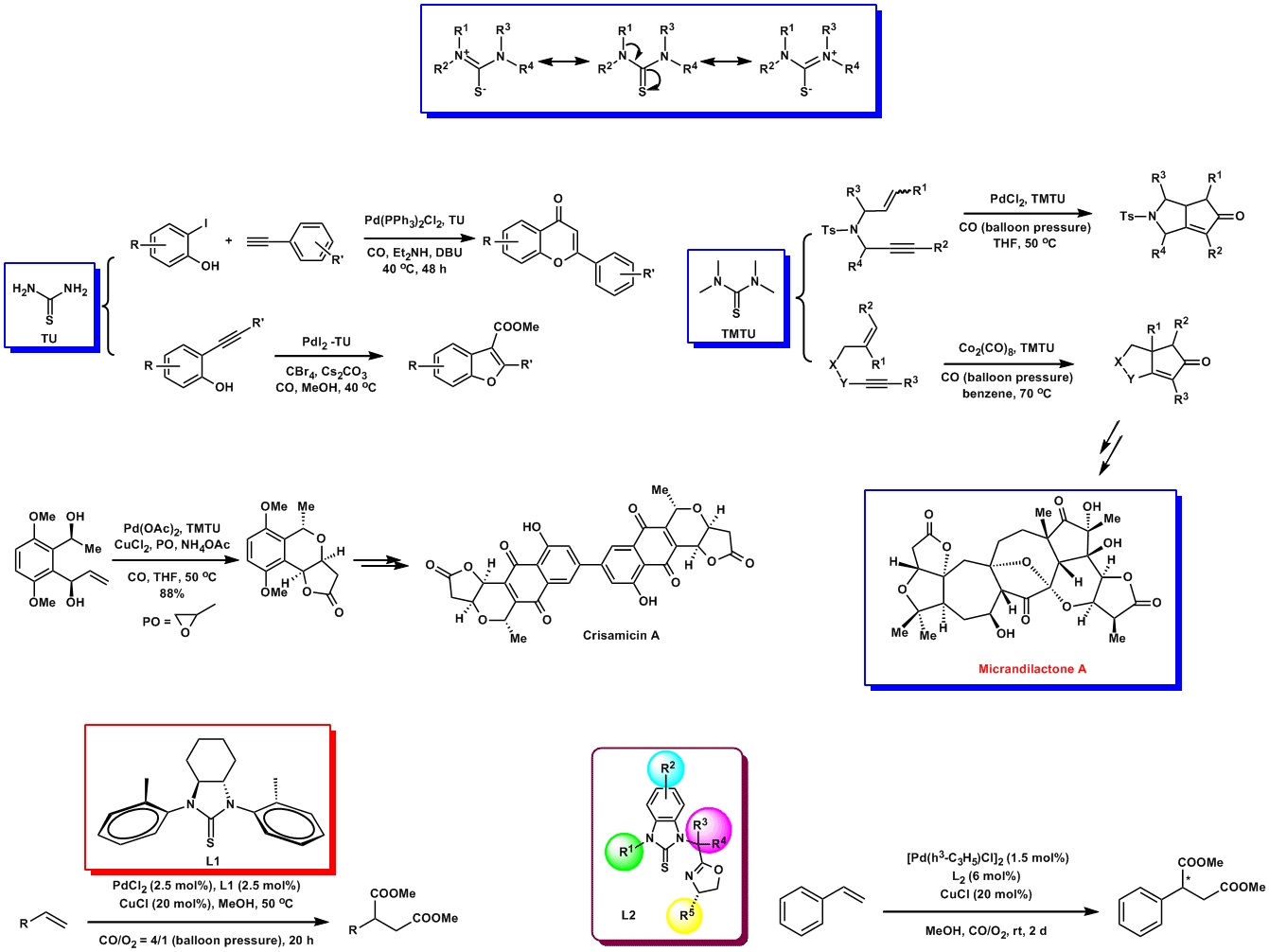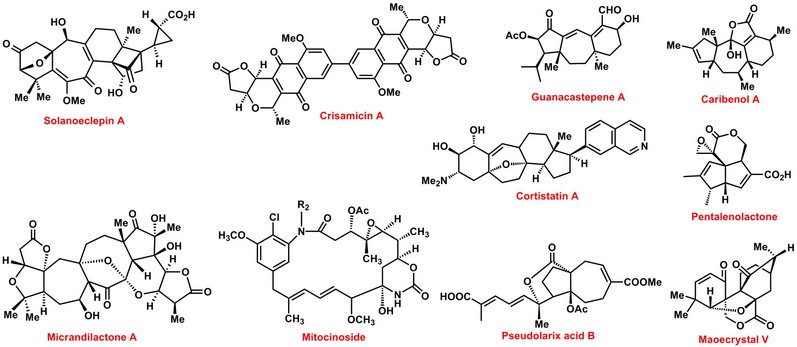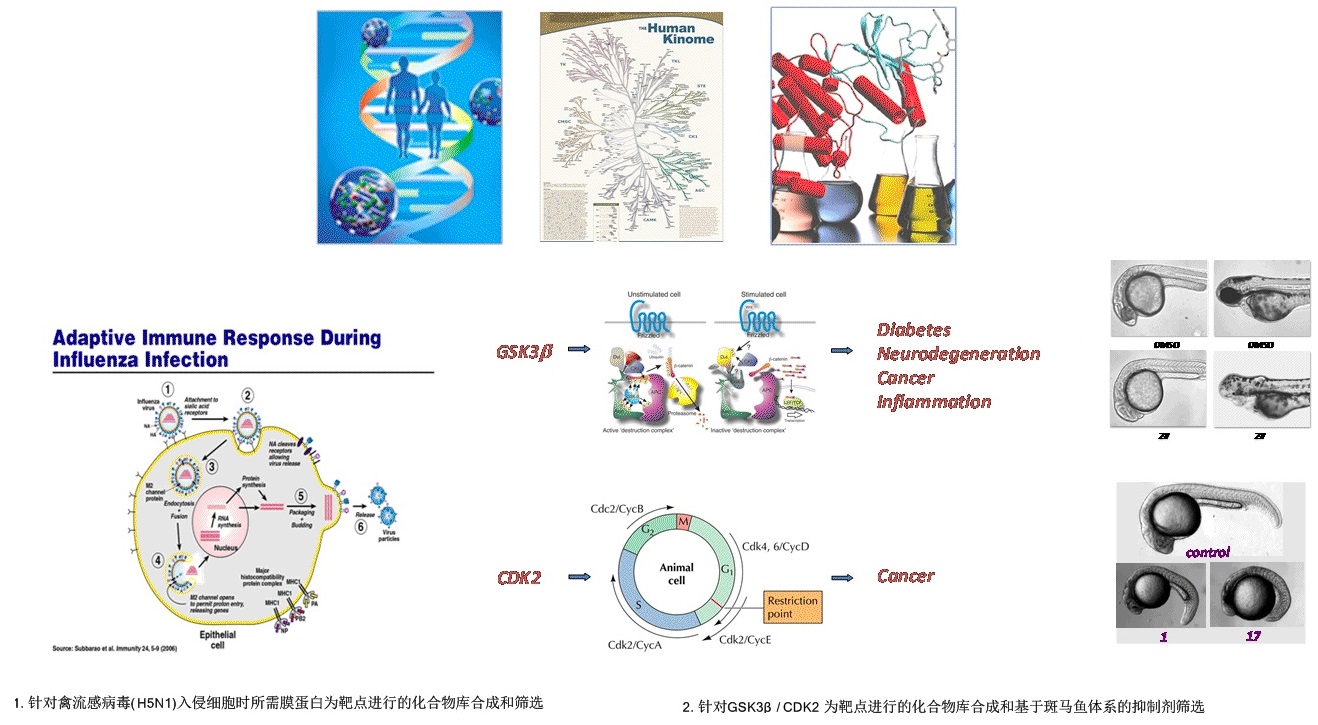Research
Summary
Natural product exists in an infinite range of complexity and diversity, and often presents dazzling biological activities. The total synthesis of complex natural product s involves distinct synthetic problems which require not only ingenuity and skills, but also the unique strategies and tactics for their solution.
The research program in our group aimed for the development of novel synthetic methodologies and strategies, then applied them to the syntheses of complex natural products, which is highly attractive, valuable, and rewarding in both chemical embodiments and medicinal demand. To those who enjoy challenges and aspire the awesome power of creating new molecules; And to those who also treasure the tremendous medicinal potencial of natural product-likes compounds, our approach provides potent chemical tools and physiological insight may be invaluable for the treatment of diseases and utilized as probes to regulate the importantly biological targets. Currently, we have built up a platform featuring(please click the titles for details):
(a) New Synthetic Methodology Program
The Pd-catalyzed cross-coupling reaction is a method for C-C bond formation. In this context, the design of novel ligands and transition metal catalysts that can effect desired transformations, with both high efficiency and selectivity, has been a fertile area of research. Phosphine-based ligands have been playing an important role in the Pd-catalyzed cross-coupling reactions. However, these ligands usually need to be handled in an inert atmosphere or in dry conditions, sometimes suffer from significant P-C bond degradation at elevated temperatures, which leads to palladium aggregation and do ham to the catalytic activity.
Recently, phosphine-free ligands, such as N-heterocyclic carbenes(NHC), and sulfur-containing ligands have been applied in some metal-catalyzed synthetic transformations, which open up new opportunities in catalysis.
Thioureas are air and moisture stable compounds and are renowned for their great tenability by varying substituents on nitrogen, so that they can coordinate to metal centers in either the neutral state or as mono-anion or dianion forms. Therefore, their physical and chemical properties can be changed by modifying their nitrogen substituents.
We recently synthesized two-type of thioureas L1 and L2, which were effectively applied to the Pd-catalyzed several types of carbonylative reactions and cross-coupling reactions. We are currently working on the investigation of the scope and limitations of our ligands in a broad spectrum of reactions.

(b) Total Synthesis Program
The object of the total synthesis is to reach the target molecule by a series of reactions. Therefore, a successful total synthesis will heavily depend on

(c)Chemical Genetic Program
Chemical genetics is a research method that uses small molecules to change the way proteins work-directly in real time rather than indirectly by manipulating their genes. It is used to identify which proteins regulate different biological processes, to understand in molecular detail how proteins perform their biological functions, and to identify small molecules that may be of medical value.
The term chemical genetics indicates that the approach uses chemistry to generate the small molecules and that it is based on principles that are similar to classical genetic screens. Scientists use two kinds of genetic approaches-forward and reverse-depending on the starting point of the investigation. As the table illustrates, a classical forward genetic analysis starts with an outward physical characteristic (called a phenotype) of interest and ends with the identification of the gene or genes that are responsible for it. In classical reverse genetics, scientists start with a gene of interest and try to find what it does by looking at the phenotype when the gene is mutated.

